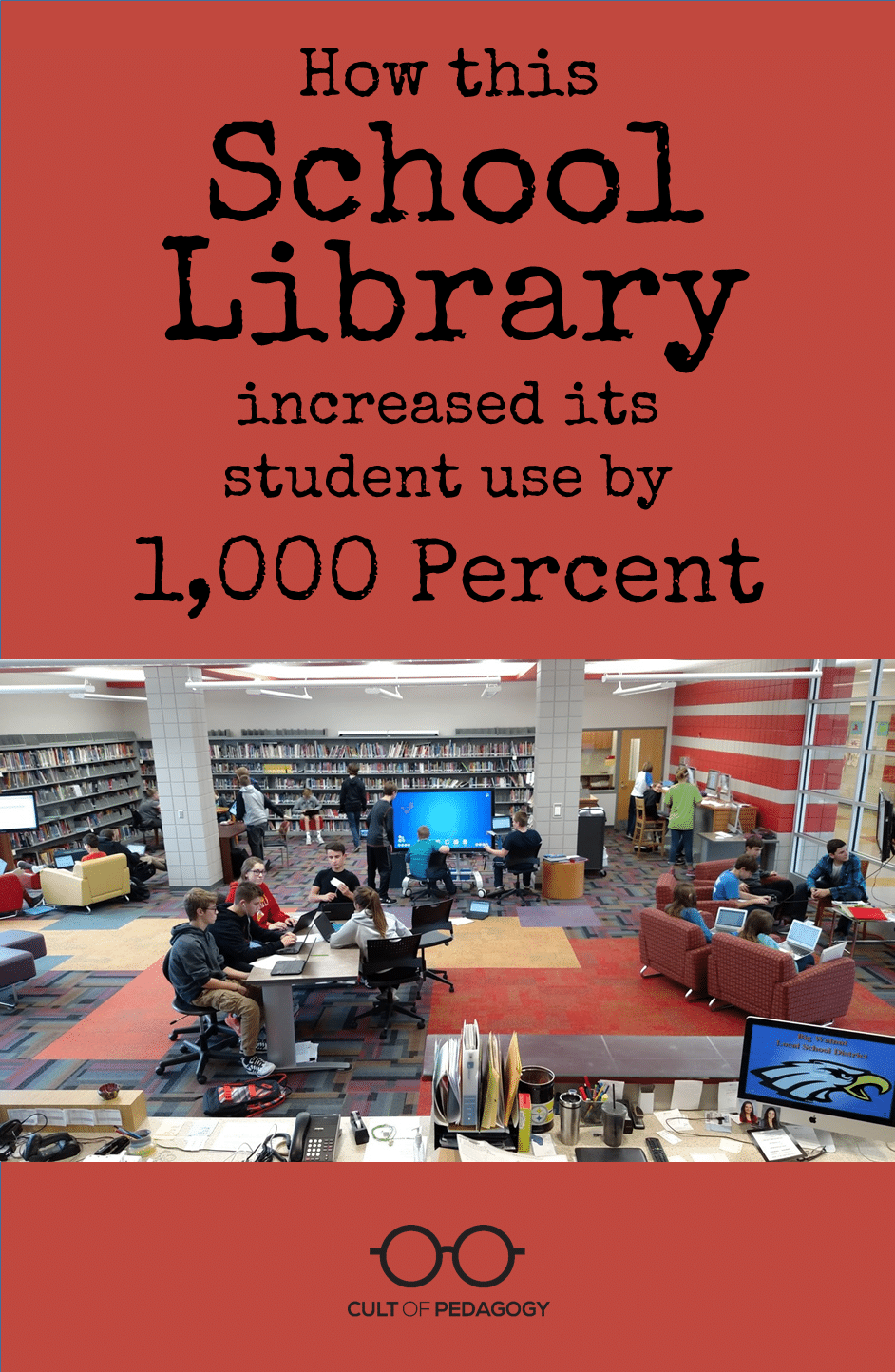
To adapt to changing student needs, some school libraries are reinventing themselves as makerspaces, but this Ohio library took a slightly different approach. Now they’re seeing incredible results.
Listen to the full interview (transcript):
Last year at Big Walnut Middle School in Sunbury, Ohio, there were some days when fewer than ten students passed through the library doors. Just like in so many other schools, students and teachers had a growing number of resources available to them through tablets, Chromebooks, e-readers and interactive whiteboards, so they no longer needed to visit the library like they once did.
Some schools have addressed this problem by converting their libraries to makerspaces. These hands-on environments allow students to to build, create, design, and experiment. When we see makerspaces, we tend to see big Lego tables, coding and computing tools like Raspberry Pi kits, and 3-D printers where students can see their creations come to life.
But Big Walnut principal Penny Sturtevant had a vision that was a bit different from the makerspaces she was seeing. She wanted her library to be a place that was a little less open-ended, a place where students did hands-on work, but as an extension of what was happening their classrooms. Instead of taking her inspiration from the maker movement, Sturtevant was interested in trends she was seeing toward more personalized learning.
As she began the process of reimagining the space, Sturtevant asked me to serve as a consultant. She introduced me to Ed Kitchen, whom she had recently hired to develop and then run the Learning Center, and the three of us met over Skype and a shared Google Doc to explore all the possibilities, think through the logistics, and formulate a plan. Even in the early stages, we knew that this might be a story I would share here, so that other schools who might not be ready for a full makerspace could see this as a viable alternative.
So how did it all turn out? Well, Big Walnut’s brand-new Learning Center definitely doesn’t suffer from a student use problem. On an average day, over a hundred students will visit to work on projects, make use of interactive technologies, film and edit videos, and yes, check out books.
Setting Up the Space
To begin redesigning the space, Kitchen did a clean sweep. “First thing Mr. Kitchen did was wipe it out, almost wiped out the contents,” Sturtevant explains. “Didn’t give them away or anything, but opened up the space. The books now became consolidated along the wall.”
Both Sturtevant and Kitchen knew they wanted to create a place where students could collaborate in lots of different ways, so they needed flexibility in how the space was used. To accomplish that, they looked for furniture that could easily be moved.
“You can’t have things that are in one spot,” Kitchen says. “If you put things in fours, they’re going to stay in fours. So everything we have there is movable, whether it’s the chairs, the interactive boards, or the flat panels.”
More than any other piece of equipment or technology, the furniture is what Sturtevant values most. “There wouldn’t be one (piece of) technology that I wouldn’t give up out of the furniture,” she says. “The way the kids can move and go…working together in pairs or partners or large groups, or if the teacher does come down and use it and we rearrange the furniture—that’s where I see the creativity of how they’re collaborating.”
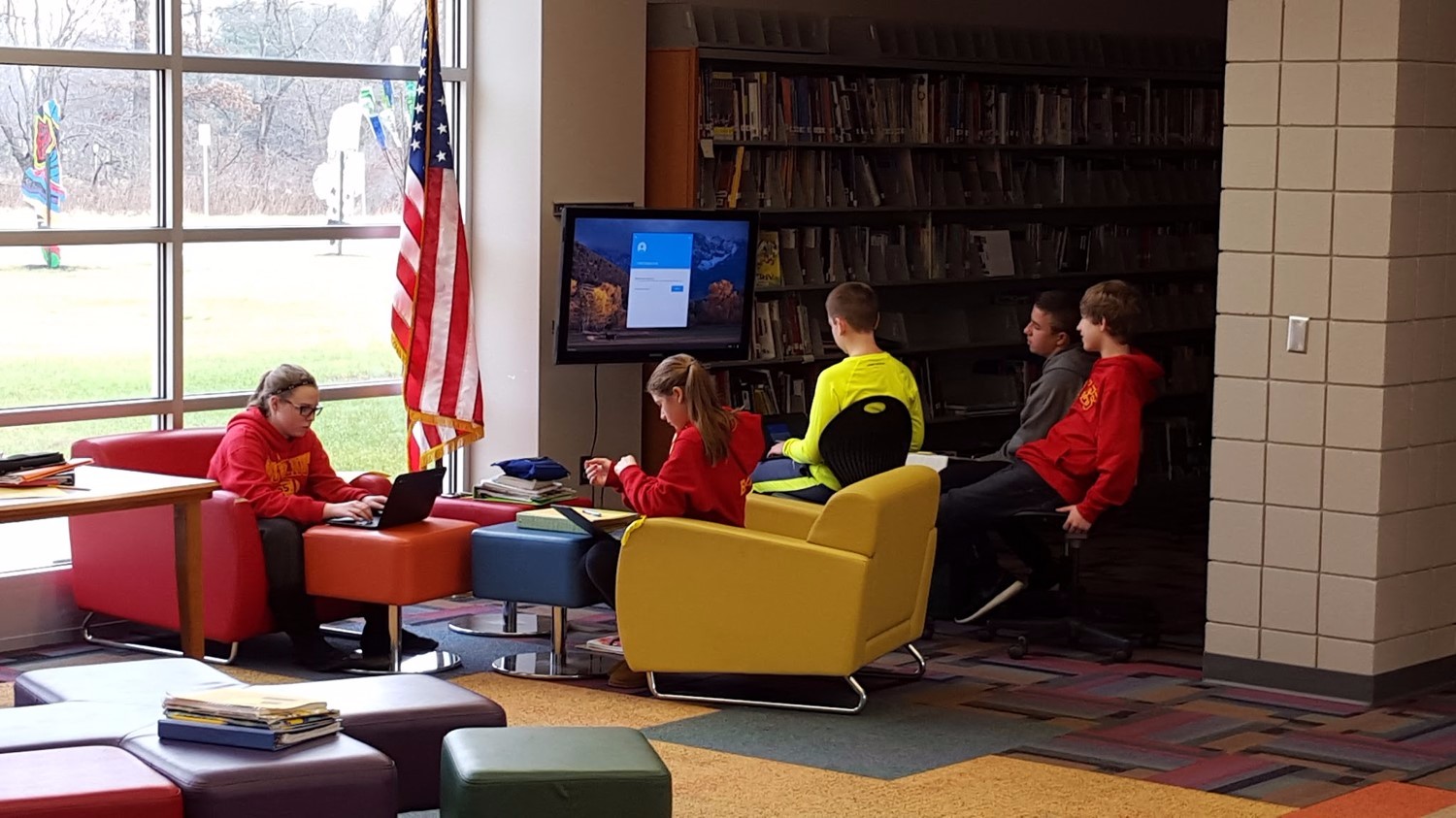
Students work in collaboration pods, making use of Chromebooks that can be hooked up to wall-mounted TVs for group viewing.
How it Works
Kitchen meets regularly with teachers to stay informed about their curricular goals. Because he knows what the Learning Center technology can do, he’s able to help teachers consider new ways they can expand their current classroom activities into the larger space. “They come to me and say, ‘How can I make this project different?'” he says. “Because they are getting tired of doing the same thing, whether it’s just presenting on a Google slide or just standing up and doing a report or writing a paper.”
Once teachers have a plan in place and are ready to send kids down to the Learning Center, they fill out a Prescription form (see below), indicating what students should be working on during their time at the Center. As students enter, they scan their student IDs with a bar code reader, which then populates a Google Spreadsheet with their names and a timestamp. Teachers have access to the spreadsheet from their own computers, so they can see exactly when students arrive at the Learning Center. Students then hand the Prescription to Kitchen or his assistant, so the staff knows exactly what students should be doing.

This arrangement has effectively made every classroom larger. “Just imagine yourself as a classroom teacher and you probably want to send kids out to the hallway, but are afraid to because of X, Y, and Z – some teachers are hesitant of that,” Kitchen explains. “So now, this space has opened that. If you want to personalize your learning, which is what we’re doing nowadays anyway, you can send three or four kids down to the learning center with this prescription that allows us really to work with them.”
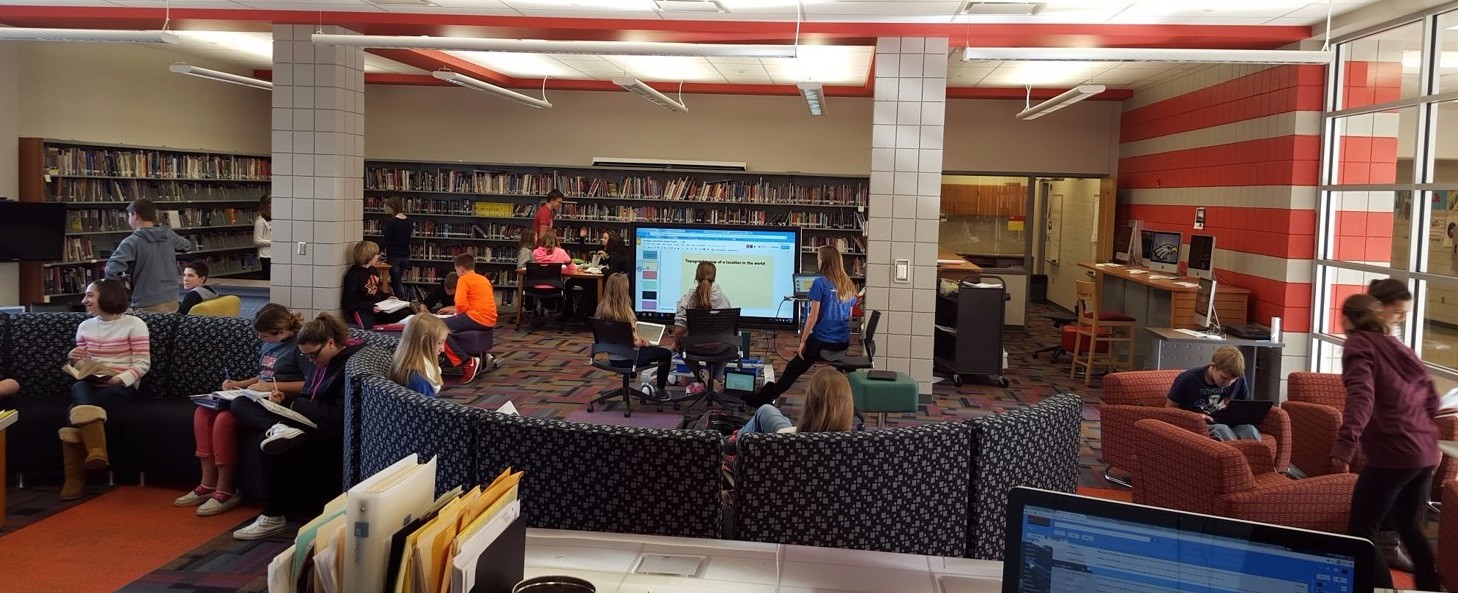
Whenever possible, furniture and technology is put on wheels to maximize the flexibility of the space.
The Tech
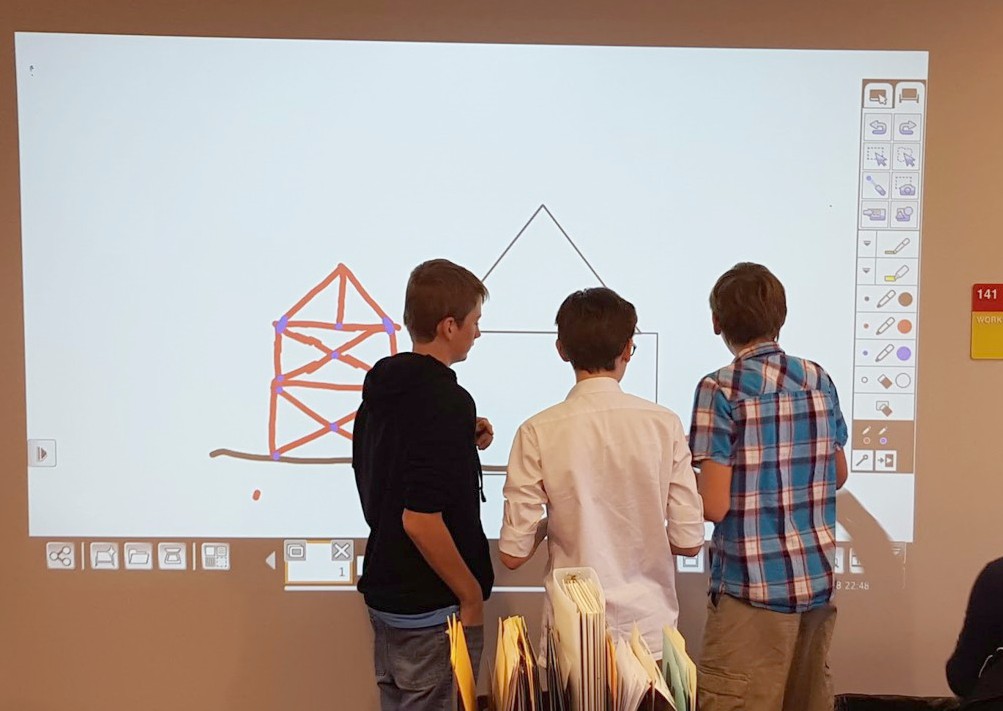
The Epson Brightlink projector allows students to interact with a projected image in much the same way they would use an interactive whiteboard.
Apart from the furniture, what equipment is available for student use? Here’s a breakdown of the tech in the Learning Center:
- 2 Clevertouch Plus interactive touchscreens
- 1 Epson Brightlink Interactive Projector
- 2 wall-mounted TVs that can be hooked up to laptops and used as monitors
- 1 green screen room, which uses an iPad with a green screen app
- 5 desktop computers
- 10 Chromebooks
- 3 digital cameras
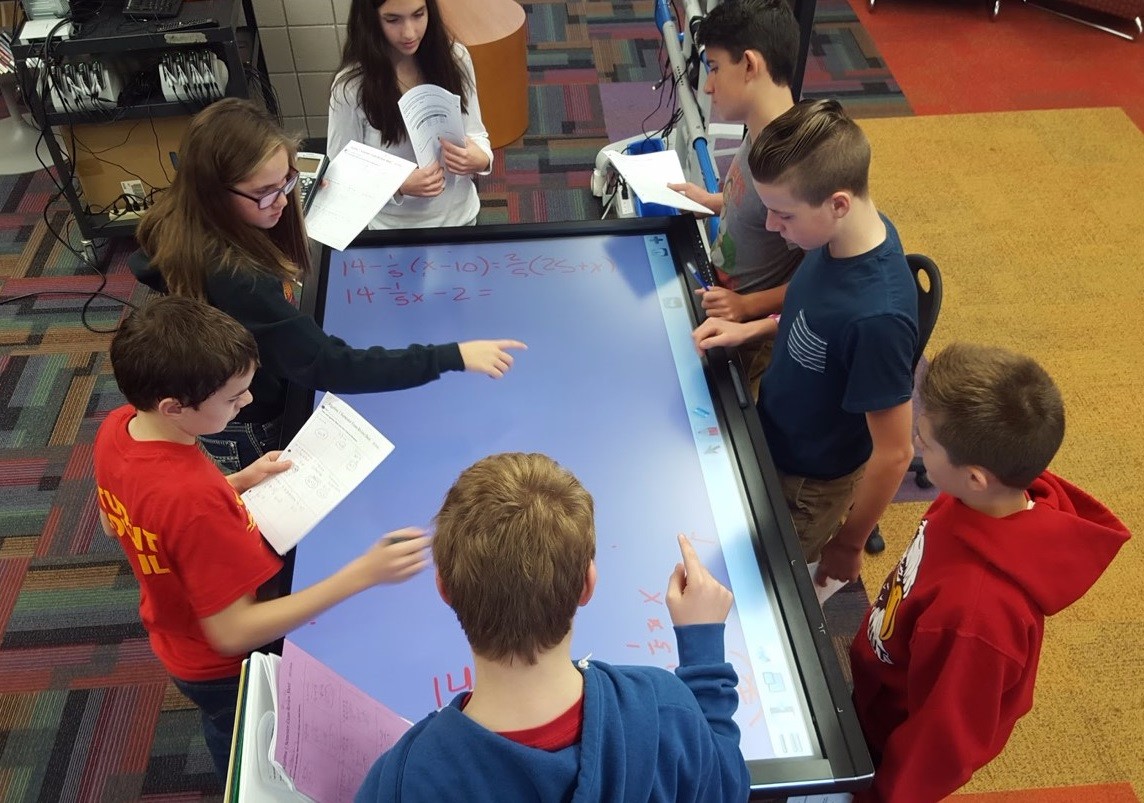
This Clevertouch interactive touchscreen can be used upright or turned on its side for use as a tabletop-style surface.
What About Books?
Can students still check out books? Absolutely. Big Walnut did not reduce its collection; they just consolidated it. In fact, students now have access to even more books than before, because Big Walnut is working on a partnership with the local public library to allow for inter-library loans with weekly deliveries to and from the school.
“So, in essence,” Sturtevant says, “we have expanded our library collection, not shrunk it.”
Big Walnut Middle School would like to thank the anonymous donor who gave to the Delaware County Foundation. Their grant made it possible to obtain many of the “extras” in the new Learning Center, such as the technology.
Are you interested in converting your library to a learning center?
Ed Kitchen, the Learning Center Coordinator for Big Walnut Middle School, is available for consulting and professional development. You can reach him at Big Walnut Middle School or on Twitter at @ekitchen87.
Join my mailing list and get weekly tips, tools, and inspiration—in quick, bite-sized packages—all geared toward making your teaching more effective and fun. You’ll get access to my members-only library of free downloadable resources, including my e-booklet, 20 Ways to Cut Your Grading Time in Half, which has helped thousands of teachers spend less time grading!

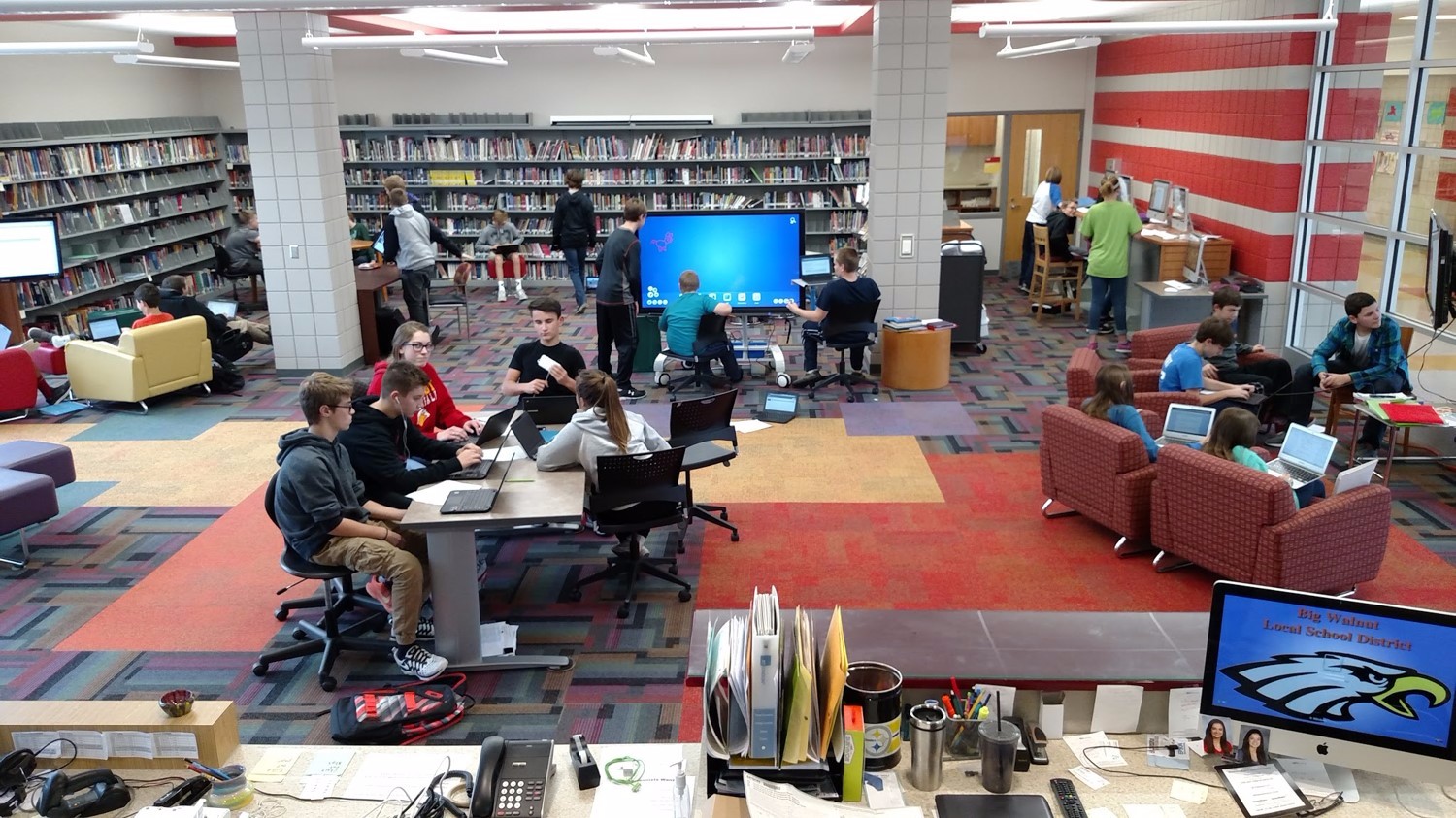
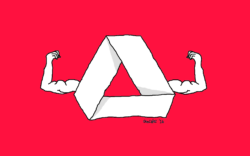

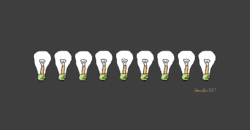

According to the Big Walnut MS site Mr. Kitchen’s is not at the school any longer. Is there any updated contact information we can get?
I went into the Staff Directory on Big Walnut’s website and searched for Kitchen, and you’re right, he didn’t come up in the default Middle School search. I changed the location to a District-Wide search and found him that way. This year is his first at the Middle School, but I believe he transferred from the same district, so maybe they never changed his location. Does that help?
Great ideas and insights here, Jennifer! I was just talking to a librarian who felt she wasn’t sure a “makerspace” is what her campus needed. This may give her another idea! Thanks for sharing this!
Where should I start looking to get furniture like the kind in this space? Any grants that you know of to help fund this? Thanks!
This was an excellent idea, especially for a diminishing usage of the library. Other than makerspace, can you share other ideas that can make my library improve its usage? Thank you.
Different strategies work for different schools with different populations. The first step is finding out exactly what your students & teachers need & want, by doing a little market research. Then plan from there.
What furniture vendor did you use? I assume your lounge chairs are on wheels.
Amazing ideas and ingenuity here. Will definitely be implementing some of these in the future.
I love this idea, however, I am in the teachers’ schedule as “planning time”. This is helping me get excited about what to do though. I have ordered furniture and I am hoping it helps. I am jealous of the huge space.
Love the idea…don’t like that we feel we need to change the name? Libraries have been around and the gateways to new experiences for years. I fear that if we try to market the “kitchen” idea it will be timely and quickly shut down by budgets constraints when times are tight. Then we have schools and communities without libraries. Nobody really wants that! This could go against what the community may understand and support. Everyone knows what a library is and the librarians who are truly supporting their students and staff would have just called this adapting to clients/students/students. A library is an organism that changes and adapts over time to meet the needs of its clients and support learning/production and experience. Having effective and qualified staff that meet state/national standards is imperative to assure this gateway is always open to new ideas like the marvelous change mentioned in this article.
I was confused by that also, but I think Ed Kitchen was actually the name of the Librarian. They called the library the Learning Center!
I was confused by the name as well! At first I thought Ed Kitchen was as in “Education Kitchen,” like… a place where you can cook up learning, I suppose? A gimmicky name for another ed tech company. But reading further I realized it is the name of a human being! I like this a lot. It also reminds me a bit of the Homework Cafe set-up at the Fusion Academies.
Please share the furniture/shelving vendors?
Really enjoyed all of the ideas in this podcast. However, I feel like many schools utilizing their MakerSpace in this way. Ours is used almost exclusively as an extension of the classroom. Either during Genius Hour when the kids have choice in what medium they are creating with, or they create in MakerSpace under constraints outlined by the teacher or media specialist. I agree with the comment above, changing the name doesn’t make it a more useful space. Promoting the curricular connection and making learning meaningful will make the library media center a “learning center” for years to come.
Absolutely outstanding ideas! Just what I was hoping to do at one of our smaller Libraries, here. I wanted to bring a community ,collaborative mode to it. This is perfect. I want to increase circulation and do a lot with makerspace. I did not know what would work, and I didn’t want to go through trial and error with ideas. Thank You so much! This is truly INSPIRING!
That’s what we need , a learning and creating center!
LOVE this idea! Please share furniture vendors. This is amazing! How did you fund this project? Were the funds provided or did you acquire Grants?
Hi, Beth! The school did receive a county grant (more details can be found in the podcast episode), but I’m not sure about furniture vendors. You may want to contact Ed Kitchen. His contact information can be found at the bottom of the post. If you find out anything, would you mind sharing? Thanks so much!
Hello! I’m just reading this blog post now but I wanted to add that as a high school librarian (the only librarian in my DISTRICT) I’m witness to many principals hitching their wagons to the Maker space movement. But let’s not lose sight of literacy! Therefore, I think Ed’s ideas are great and may be a good balance between library and Maker space. As for increasing book circulation, I would encourage librarians to adopt a genre model for their fiction. I, myself, have begun putting bookmarks in new titles and marking them with the tags from Titlewave. These kids live their lives through tags! For example: horror, LGBTQ, friendship might be tagged on one bookmark while another might read: science fiction, bounty hunters computer crimes. It gets to the heart of the book with an economy of verbiage, helps me during book talks, and the students like it!
Not related to the (great!) idea of the post or podcast, but does anyone know what iPad app they’re using at BWMS for the green screen videos? I’ve looked into a few, but I’m hoping to know what others use for similar application. Thank you.
We use Touchcast as our video screen app on the Ipad. It us free and very easy to use. Feel free to email me at Edkitchen@bwls.net !
I’d love an update on this! I can imagine there have been adjustments and new ideas tried out.
I love the idea. This is what the students in 2019 need! I wish there were more info on the vendors (as many have asked) for the furniture as well as the technology. I tried contacting one of the companies for the interactive whiteboards and left them a message, however, I am yet to hear from them! Is there anyways that we could get an update on the library and how the transformation is helping the students after 3 or 4 years. Also the link to the companies or organizations involved in furnishing and technology. Thank you very much!
Thanks Laila. For links to the companies involved with the furniture and technology, I’d recommend reaching out to Ed Kitchen. See this comment for his contact information. I’m sure you’d also be able to inquire with him for an update on how this transformation is still helping students today.
Hi Eric,
I did email Ed, however, I have not heard back from him yet. We are trying to raise money for our library to update the space, and I would have loved to hear from someone who has renovated their space and hoped to get some feedback.
Laila,
We can try reaching out to Ed as well. In the meantime, you can also try reaching out to him on Twitter @ekitchen87 or maybe someone else will be able to jump in who’s done some renovations who can help out. Keep checking back!
Debbie,
Thank you very much! Actually, this morning as I was checking my work emails, found one from Ed! He’d gotten back to me and answered my questions. Very helpful.
Thank you all! Now, keep your fingers crossed for my library’s renovation 🙂
Yay! Thanks for letting us know — best of luck!
Thank you for your suggestion, Eric! I will definitely write to Ed. 🙂
Regards,
Laila
Exciting! Our library serves Pre-8th grades currently, but next year the middle school is moving into a separate building. Has anyone tried this model with elementary grades?
I have a computer lab that will move into it’s own classroom once the middle school is moved, which will free up a lot of space in the library.
This post was very inspirational. I, too, would appreciate an update to this post in terms of how this space has evolved over the last four years – what lessons they have learned and how things have changed. Also, ideas on how to adapt this to the elementary level.
I agree with my colleague above (i.e. Cobb). Please contact me or send me contact info to connect and collaborate with those who implemented this idea so that I may get a sense of how this could be done in my school library.
I tried searching for Ed Kitchen at BWLS but could not find him anywhere in the district
Thanks for any insight that you may!
Hi Amy,
Because Jenn wrote that post so long ago and unfortunately, has lost contact with Ed, our suggestion is to reach out directly to Big Walnut Middle School and see if somebody there can talk with you. You could also try reaching out to Ed on Twitter @ekitchen87 and see if that works.
Anyone looking for Big Mountain Furniture company check out Sela lounge chairs at https://www.ki.com/products/name/sela-lounge-seating/
Oops. Big Walnut Middle School’s furniture company.